|
| |

|
D
-
Misc books/video related to
JFK Years |
1
2
3 4
5
|
Books 151 - 200 |
Secret Service Dogs
[The Heroes who protect the President of the United States] |
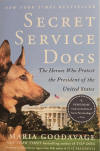 |
Maria Goodavage
2017 |
In an age fraught with
terrorism, United States Secret Service canine teams risk their lives to
safeguard the president, vice president, their families, visiting heads of
state, and a host of others. Unprecedented access to these heroic dog
teams has allowed a fascinating first-time-ever look at a very special
breed of heroes.
Wherever the president goes, there will be dogs. They’ll be there no
matter what the country or state. They’ll be there regardless of the
political climate, the danger level, the weather, or the hour.
“If you let down your guard on the job,” says Special Agent Bill G.,
canine program manager, “it can change the history of the world.” It’s a
burden Secret Service dog handlers take extremely seriously regardless of
their specialty. Tactical dog handlers on the White House lawn, handlers
whose dogs sniff for explosives around the world, and those who walk their
amiable floppy-eared dogs up and down Pennsylvania Avenue all live one
common mantra: Not on my watch. Or my dog’s.
Secret Service Dogs immerses readers into the heart of this elite world of
canine teams who protect first families, popes, and presidential
candidates: the selection of dogs and handlers, their year-round training,
their missions around the world, and, most important, the bond—the glue
that holds the teams together and can mean the difference between finding
bombs and terrorists or letting them slip by. |
|
Sette giorni a Maggio |
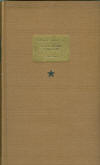 |
Knebel Fletcher & Bailey Vharles W. II
1963 |
Italian version of
the novel "SEVEN DAYS IN MAY", written in 1962 during JFK Presidency.
"Seven Days in May" is an authentic classic political thriller of the
first rank. Authors Baily and Knebel present a scenario in which an
unpopular President is targeted by America's top military brass for an
actual military takeover of the government. The story is complex, but
vividly presented with an authenticity that is both disturbing and
plausible. The reader is brought to understand that it could happen here,
and the story suggests how such a scenario could come about in these
United States.
The novel is well-written and fast-paced, never drags, and absolutely
holds the reader's interest throughout. The amazing thing about the story
is that every bit of it hangs together without straining the reader's
sense of credulity. The novel features excellent writing, and the authors
weave the plot together towards a conclusion that is startling and
believable.
This was a big budget movie in the 1960s featuring Kirk Douglas and Burt
Lancaster. |
|
Sette giorni per il Presidente |
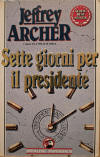 |
Jeffrey Archer
1992 |
Italian version of
the novel "SHALL WE TELL THE PRESIDENT?".
Master storyteller Jeffrey Archer keeps the pace sizzling in this final
installment in the Kane and Abel trilogy, Shall We Tell the President?, a
daring political thriller where treason and betrayal threaten to topple an
American dynasty.
After years of great sacrifice and deep personal tragedy, Florentyna Kane
has finally become the first woman president in America. But on the very
day that she is sworn into office, powerful forces are already in motion
to take her life.
The FBI investigates thousands of false threats every year. This time, a
reliable source has tipped them off about an assassination attempt. One
hour later, the informant and all but one of the investigating agents are
dead. The lone survivor: FBI Special Agent Mark Andrews. Now, only he
knows when the killers will strike. But how can he alone unravel a
ruthless conspiracy—in less than one week? The race to save the first
woman president begins now… |
|
Shooting Kennedy :
JFK and the culture of images |
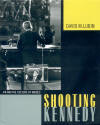 |
David M. Lubin
2003 |
David
Lubin is Professor of Art at Wake Forest University.
In this book he speculates on the iconic images of the
Kennedys, using them to illuminate the entire American cultural landscape.
He draws from a spectacularly varied intellectual and visual terrain to
show how the public came to identify personally with the Kennedys and how,
in so doing, they came to understand their place in the world. |
Spy Pilot
(Francis Gary Powers, the U-2 incident and a controversial Cold War
legacy) |
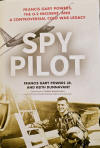 |
Francis Gary Powers Jr & Keith Dunnavant
2019 |
Based on
newly available information, the son of famed U-2 pilot Francis Gary
Powers presents the facts and dispels misinformation about the Cold War
espionage program that turned his father into a Cold War icon..One of the
most talked-about events of the Cold War was the downing of the American
U-2 spy plane piloted by Francis Gary Powers over the Soviet Union on May
1, 1960. The event was recently depicted in the Steven Spielberg movie
Bridge of Spies. Powers was captured by the KGB, subjected to a televised
show trial, and imprisoned, all of which created an international
incident. Soviet authorities eventually released him in exchange for
captured Soviet spy Rudolf Abel. On his return to the United States,
Powers was exonerated of any wrongdoing while imprisoned in Russia, yet,
due to bad press and the government's unwillingness to heartily defend
Powers, a cloud of controversy lingered until his untimely death in 1977.
Now his son, Francis Gary Powers Jr. and acclaimed historian Keith
Dunnavant have written this new account of Powers's life based on personal
files that had never been previously available. Delving into old audio
tapes, letters his father wrote and received while imprisoned in the
Soviet Union, the transcript of his father's debriefing by the CIA, other
recently declassified documents about the U-2 program, and interviews with
the spy pilot's contemporaries, Powers and Dunnavant set the record
straight. The result is a fascinating piece of Cold War history. This is
also a book about a son's journey to understand his father, pursuing
justice and a measure of peace.Almost sixty years after the fact, this
will be the definitive account of one of the most important events of the
Cold War. |
|
Storia dei Presidenti Americani |
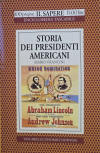 |
Mario Francini
1996 |
Italian
book, written in 1996..
Seen from the window of the White House, these pages unfold three
centuries of American history: the span of time separating us from the
first presidency of the United States of America, the most powerful and
coveted office in the world. From Lincoln to Washington, from Roosevelt to
Kennedy, all the way to Bill Clinton, more than 40 American presidents
have played a pivotal role in world history and politics. |
Storia del popolo americano
(Dal 1942 a oggi) |
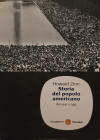 |
Howard Zinn
2010 |
Italian
version of the book "A People's History of the United States".
Known for its lively, clear prose as well as its scholarly research, itis
the only volume to tell America's story from the point of view of—and in
the words of—America's women, factory workers, African-Americans, Native
Americans, the working poor, and immigrant laborers. As Zinn shows, many
of our country's greatest battles—the fights for a fair wage, an
eight-hour workday, child-labor laws, health and safety standards,
universal suffrage, women's rights, racial equality—were carried out at
the grassroots level, against bloody resistance. |
|
Taking Charge -
The Johnson White House Tapes, 1963-1964 |
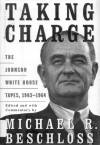 |
Michael R. Beschloss
1997 |
This
book, edited by Michael R.Beschloss, whom "Newsweek" has called "America's
leading presidential historian", brings you into the room with an American
political legend, still hated and revered a quarter century after his
death. We hear Lyndon Johnson as he schemes and blusters, rewards and
punishes, tells tales of Washington,D.C., and Texas, and reveals a bedrock
core of unshakable political beliefs.
The only President to record his private conversation from his first day
in office, LBJ ordered the pates to be locked in a vault until year 2023.
But new they have been unsealed, providing a close-up look at a President
taking power such as we have never done before. |
|
Texas in the
Morning |
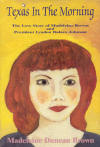 |
Madeleine Duncan Brown
1997 |
Madeleine Duncan Brown fills in a huge gap in our understanding of
President Lyndon Baines Johnson with whom she had a long-term love affair.
Johnson was one of the most complex figures in American history and the
often severe conflict in his character and actions makes him most
difficult to understand. |
The Accidental President
[The
Election Year Blockbuster on LBJ] |
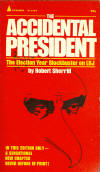 |
Robert Sherrill
1968 |
From
back cover:
"Never has an American President ridden such a roller-coaster of
popularity as has Lyndon Baines Johnson.
Sometimes LBJ's rating is up, sometimes it's down, but always the result
is that a shocking proportion of the American people are not behind their
President.
Why? What has appened to this countr's feeling about the Presidency?
THE ACCIDENTAL PRESIDENT gives a vetern reporter's anser, in a stinging
survey of LBJ's life and career, a book that has already raised a storm of
rage and praise - a book that must be read in this crucial election
year(1968)." |
|
The Adamses
1735-1918 - America's First Dinasty |
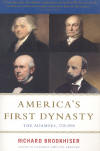 |
Richard Brookhiser
2002 |
The
Adamses were America's longest dynasty, the closest thing to a royal
family USA has ever known. The Adamses played a leading role in America's
affairs for nearly two centuries - from John, the self-taught lawyer who
rose to the highest office in the government he helped to create; to John
Quincy, the child prodigy who followed his father to the White House and
fought slavery in Congress; to Charles Francis, the Civil War diplomat: to
Henry, the brilliant scholar and journalist. Indeed, the history of the
Adams family can be read as the history of America itself.
|
The American President: A Complete History
[Detailed Biographies, Historical Timelines] |
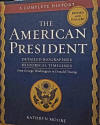 |
Kathryn Moore
2018 |
In
"The American President: A Complete History",
historian Kathryn Moore presents a riveting narrative of each president's
experiences in and out of office, along with illuminating facts and
statistics about each administration, timelines of national and world
events, astonishing trivia, and more. Together, these details create a
complex and nuanced portrait of the American presidency, from the nation's
infancy to today—including Donald Trump’s first year in office. |
|
The Assassins |
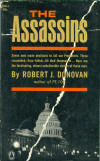 |
Robert J. Donovan
1962 |
Robert
John Donovan (August 21, 1912-August 8, 2003) was a Washington
correspondent, author and presidential historian. He was the author of
"PT-109" book.
He published in 1962 this book "The Assassins" about seven men who made
decisions to kill US Presidents : three succeeded, four failed, all died
themselves. Here are the fascinating, almost unbelievable stories of these
men.
The following year, 1963, L.H.Oswald killed President J.F.Kennedy. |
The Awful Grace of God
[Religious Terrorism, White Supremacy and the unsolved murder of Martin
Luther King Jr] |
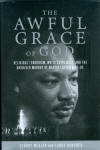 |
Stuart Wexler and Larry Hancock
2012 |
This
book chronicles a multi-year effort to kill Martin Luther King Jr by a
group of the nation's most violent right-wing extremist. Impeccably
researched and thoroughly documented, this book examines a network of
racist militants who were united in a holy cause to kill King.
"The Awful Grace of God" offers the most comprehensive and up-to-date
study of the king assassination and presents a roadmap for future
investigation. |
|
The Battler with
JFK and Other Individuals of Note |
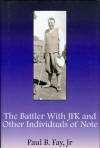 |
Paul B. "Red" Jr Fay
2003 |
The
book is about Paul B.Fay (Red's father) who had six children and twenty
two grandchildren. He took his family to the Olympic Games in Berlin in
1936. He owned and operated a heavy construction company called The Fay
Improvement Company, was generous to a fault and loved his gold game. He
was influential in the growth of San Francisco and served as President of
the wonderful Pacific Union Club.
There are sixty-three chapters in the book which highlights his encounters
with the following individuals : Jack Kennedy, Bob McNamara,
Bobby Kennedy, Rowland Evans, Ethel Kennedy, Ambassador
Joseph Kennedy,Charles Lindbergh, Byron "Whizzer" White, Jesse Owens,
Franklin Delano Roosevelt, John Kenneth Galbraith, David Brinkley and
General Dwight Eisenhower, to name a few.
Paul B."Red" Fay Jr wrote the best selling book "The Pleasure of His
Company", that chronicles his personal friendship with John F.Kennedy
dating back to their time in P.T. Boats in the Pacific in World War II.
|
|
The Best and the
Brightest |
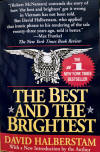 |
David Halberstam
1993 |
Using
portraits of America’s flawed policy makers and accounts of the forces
that drove them, The Best and the Brightest reckons magnificently with the
most important abiding question of our country’s recent history: Why did
America become mired in Vietnam, and why did we lose? As the definitive
single-volume answer to that question, this enthralling book has never
been superseded. It is an American classic. |
The Broken Road
[George Wallace and a Daughter's Journey to Reconciliation] |
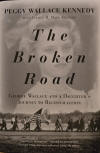 |
Peggy Wallace Kennedy
2019 |
From
George Wallace's "Stand in the Schoolhouse Door" to President John
Kennedy's historic civil rights speech, and late at night, the shooting of
Medgar Evers, June 11, 1963 was one of the most significant days in the
civil rights movement.
On that day, George Wallace defined his legacy
with his “Stand in the Schoolhouse Door”
From the daughter of one of America’s most virulent segregationists, a
memoir that reckons with her father George Wallace’s legacy of hate--and
illuminates her journey towards redemption.
Peggy Wallace Kennedy has been widely hailed as the “symbol of racial
reconciliation” (Washington Post). In the summer of 1963, though, she was
just a young girl watching her father stand in a schoolhouse door as he
tried to block two African-American students from entering the University
of Alabama. This man, former governor of Alabama and presidential
candidate George Wallace, was notorious for his hateful rhetoric and his
political stunts. But he was also a larger-than-life father to young
Peggy, who was taught to smile, sit straight, and not speak up as her
father took to the political stage. At the end of his life, Wallace came
to renounce his views, although he could never attempt to fully repair the
damage he caused. But Peggy, after her own political awakening, dedicated
her life to spreading the new Wallace message--one of peace and
compassion.
In this powerful new memoir, Peggy looks back on the politics of her youth
and attempts to reconcile her adored father with the man who coined the
phrase “Segregation now. Segregation tomorrow. Segregation forever.”
Timely and timeless, The Broken Road speaks to change, atonement,
activism, and racial reconciliation. |
The Butler
Un maggiordomo alla Casa Bianca |
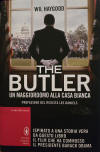 |
Wil Haygood
2013 |
Italian version.
Inspired by a true story
From this book the film that moved President Barack Obama
In 2008, on the eve of the epic elections that would have brought Barack
Obama to the White House, Wil Haygood thought of celebrating that moment
thanks to a privileged witness, someone who had experienced firsthand the
last fifty years of American history.
He thus set out on the trail of Eugene Allen, the butler who had worked at
the White House from 1952 to 1986. After dozens and dozens of phone calls
and long searches, the journalist finally obtained Allen's address. He was
still alive. He was almost ninety years old and lived with his wife Helene
in a modest and decorous neighborhood of Washington. Haygood then had the
opportunity to interview Allen, the butler who knew the private lives of
eight presidents of the United States, from Harry Truman to Ronald Reagan.
The journalist later wrote a long article about it in the "Washington
Post" which had enormous resonance. Thus was born the book The Butler,
which tells the extraordinary life of Eugene Allen and reveals all the
secrets that the walls of the White House have protected for decades.
Over 30 years serving in the White House
8 different US presidents
From Truman to Reagan, from John F. Kennedy to Nixon
The true story of the butler, an extraordinary witness of the daily life
of the most powerful men in the world. |
|
The complete
Marilyn Monroe |
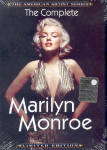 |
AA.VV.
DVD |
A collection of newsreel
stories (B&W-28 minutes).
A collection of trailers for Marilyn's films (B&W/Color 45 minutes).
A complete collection of Marilyin Monroe's studio performances (24 songs). |
|
The day Lincoln
was shot |
 |
Jim Bishop
1983 |
This book is the complete
record of the dramatic events that occurred on the day Mr Lincoln was shot
in Ford's Theatre : the chapters start at 7 AM, April 14,1865 and close at
7AM, April 15, 1865. The book opens with the President emerging from
his bedroom, worried about a dream in which he saw himself dead, and ends
with the Surgeon General placing two silver dollars on the President's
eyelids. |
The Devil's Chessboard
[Allen
Dulles, the CIA and the rise of America's secret government] |
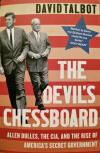 |
David Talbot
2015
|
An explosive,
headline-making portrait of Allen Dulles, the man who transformed the CIA
into the most powerful—and secretive—colossus in Washington.
America’s greatest untold story: the United States’ rise to world
dominance under the guile of Allen Welsh Dulles, the longest-serving
director of the CIA. Drawing on revelatory new materials—including newly
discovered U.S. government documents, U.S. and European intelligence
sources, the personal correspondence and journals of Allen Dulles’s wife
and mistress, and exclusive interviews with the children of prominent CIA
officials—Talbot reveals the underside of one of America’s most powerful
and influential figures.
Dulles’s decade as the director of the CIA—which he used to further his
public and private agendas—were dark times in American politics. Calling
himself “the secretary of state of unfriendly countries,” Dulles saw
himself as above the elected law, manipulating and subverting American
presidents in the pursuit of his personal interests and those of the
wealthy elite he counted as his friends and clients—colluding with
Nazi-controlled cartels, German war criminals, and Mafiosi in the process.
Targeting foreign leaders for assassination and overthrowing nationalist
governments not in line with his political aims, Dulles employed those
same tactics to further his goals at home, Talbot charges, offering
shocking new evidence in the assassination of President John F. Kennedy.
An exposé of American power that is as disturbing as it is timely, The
Devil’s Chessboard is a provocative and gripping story of the rise of the
national security state—and the battle for America’s soul. |
|
The Fifties |
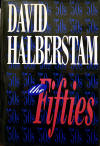 |
David Halberstam
1993
|
The Fifties is a sweeping
social, political, economic, and cultural history of the ten years that
Halberstam regards as seminal in determining what our nation is today.
Halberstam offers portraits of not only the titans of the age: Eisenhower
Dulles, Oppenheimer, MacArthur, Hoover, and Nixon, but also of Harley
Earl, who put fins on cars; Dick and Mac McDonald and Ray Kroc, who
mass-produced the American hamburger; Kemmons Wilson, who placed his
Holiday Inns along the nation's roadsides; U-2 pilot Gary Francis Powers;
Grace Metalious, who wrote Peyton Place; and "Goody" Pincus, who led the
team that invented the Pill.
These are the years that saw the political growth of JFK (deputy and then
senator) up to his candidacy for the Presidency of the United States. |
|
The Fog of War |
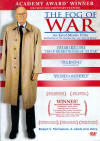 |
Morris Errol
DVD
2003 |
**Academy Award Winner -
2003 Best Documentary Feature**
Former Secretary of Defense, under President Kennedy and President
Johnson, Robert S. McNamara was one of the most controversial and
influencial political figures of the 20th century. Now -for the first time
ever - he sits down one on one with award-winning director Errol Morris to
offer a candid and intimate journey through some of the most seminal
events in contemporary American history. |
|
The Freedom
Riders |
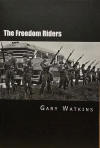 |
Gary Watkins
2014 |
Freedom Riders were civil
rights activists who rode interstate buses into the segregated southern
United States in 1961 and following years to challenge the non-enforcement
of the United States Supreme Court decisions Irene Morgan v. Commonwealth
of Virginia (1946) and Boynton v. Virginia (1960),[1] which ruled that
segregated public buses were unconstitutional.[2] The Southern states had
ignored the rulings and the federal government did nothing to enforce
them. The first Freedom Ride left Washington, D.C., on May 4, 1961,[3] and
was scheduled to arrive in New Orleans on May 17. Boynton outlawed racial
segregation in the restaurants and waiting rooms in terminals serving
buses that crossed state lines. Five years prior to the Boynton ruling,
the Interstate Commerce Commission (ICC) had issued a ruling in Sarah Keys
v. Carolina Coach Company (1955) that had explicitly denounced the Plessy
v. Ferguson (1896) doctrine of separate but equal in interstate bus
travel. The ICC failed to enforce its ruling, and Jim Crow travel laws
remained in force throughout the South. The Freedom Riders challenged this
status quo by riding interstate buses in the South in mixed racial groups
to challenge local laws or customs that enforced segregation in seating.
The Freedom Rides, and the violent reactions they provoked, bolstered the
credibility of the American Civil Rights Movement. They called national
attention to the disregard for the federal law and the local violence used
to enforce segregation in the southern United States. Police arrested
riders for trespassing, unlawful assembly, and violating state and local
Jim Crow laws, along with other alleged offenses, but they often first let
white mobs attack them without intervention. The Congress of Racial
Equality (CORE) sponsored most of the subsequent Freedom Rides, but some
were also organized by the Student Nonviolent Coordinating Committee
(SNCC). The Freedom Rides followed dramatic sit-ins against segregated
lunch counters, conducted by students and youth throughout the South, and
boycotts of retail establishments that maintained segregated facilities,
beginning in 1960. |
The Importance of Being Kennedy
[A
Bittersweet Comedy about America's Royal Family] |
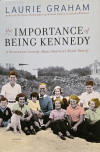 |
Laurie Graham
2008 |
Novel.
A brilliant new novel by Laurie Graham set
in wartime London, which follows Kick Kennedy, sister of future US
President JFK, as she takes London society by storm.
Nora Brennan is a country girl from Westmeath. When she lands herself a
position as nursery maid to a family in Brookline, Massachusetts, she
little thinks it will place her at the heart of American history. But it's
the Kennedy family. In 1917 Joseph Kennedy is on his way to his first
million and he has plans to found a dynasty and ensure that his baby son,
Joe Junior, will be the first Catholic President of the United States.
As nursemaid to all nine Kennedy children, Nora witnesses every moment,
public and private. She sees the boys coached at their father's knee to
believe everything they'll ever want in life can be bought. She sees the
girls trained by their mother to be good Catholic wives. World War II
changes everything.
At the outbreak of war the Kennedys are living the high life in London,
where Joseph Kennedy is the American ambassador. His reaction is to send
the entire household back across the Atlantic to safety, but Nora,
surprised by midlife love, chooses to stay in England and do her bit.
Separated from her Kennedys by an ocean she nevertheless remains the warm,
approachable sun around which the older children orbit: Joe, Jack,
Rosemary, and in particular Kick, who throws the first spanner in the
Kennedy works by marrying an English Protestant.
Laurie Graham's poignant new novel views the Kennedys from below stairs,
with the humour and candour that only an ex-nursemaid dare employ. |
|
The Inaugural
addresses from the Presidents of the United States of America
(1789-2017) |
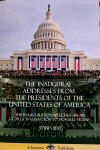 |
AA.VV.
2018 |
The Inauguration speeches from
George Washington to Donald Trump (1789-2017) |
|
The Innocent Man
Script : Cui Bone - To Whose Advantage? |
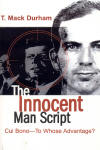 |
Durham T.Mack
2000 |
Novel about JFK Assassination and
Lee Harvey Oswald. |
|
The Kennedy
Assassination |
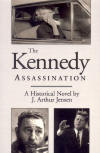 |
Jensen J.Arthur
2000 |
A historical novel by J.Arthur
Jensen. |
|
The Kennedy
Plan
[A play] |
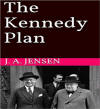 |
Jensen J.Arthur
2019 |
In this play of historical fiction,
J.Arthur Jensen presents the story of Joseph Kennedy's service as
Ambassador to England prior to and during the early months of World War
II. This dramatization illustrates that negotiation rather than military
conflict might have been used to address the Nazi threat.
In 1938, with tensions rising in Europe, President Franklin
Roosevelt appointed Joseph P. Kennedy to be the United States Ambassador
to the Court of St. James with instructions to support efforts to maintain
the peace. Kennedy learned that much of the political tension was rooted
in Nazi anger over the Treaty of Versailles-- the treaty which twenty
years earlier had concluded the Great War. After he assessed the political
choices, Kennedy supported Prime Minister Chamberlain's effort to maintain
European peace by allowing the re-unification of the German people of the
Sudetenland with Nazi Germany but he realized that the key to long term
European peace was to create a mechanism for legal migration of Jews out
of Germany. Kennedy lobbied for a plan which had been previously explored
by British and American diplomats: allow Jewish migration to multiple
different countries. Christened "the Kennedy Plan" by the press, the plan
quickly brought condemnation from non-Jews who did not want new Jewish
immigration and from Jews who favored only immigration to Palestine. As
Hitler demonstrated the power of his new Luftwaffe and German Panzers,
Kennedy urged negotiation and compromise. Voices to maintain peace were
overwhelmed by voices for war and we are left to wonder if the Nazi threat
was handled properly by the governments of the west. Might negotiation
have avoided the massive loss of life that resulted from the Second World
War? |
The Kerner Report
[The National Advisory Commission on Civil Disorders] |
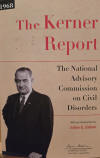 |
Julian E.Zelizer (introduction)
2016 |
A landmark study of racism,
inequality, and police violence that continues to hold important lessons
today
The Kerner Report is a powerful window into the roots of racism and
inequality in the United States. Hailed by Martin Luther King Jr. as a
"physician's warning of approaching death, with a prescription for life,"
this historic study was produced by a presidential commission established
by Lyndon Johnson, chaired by former Illinois governor Otto Kerner, and
provides a riveting account of the riots that shook 1960s America. The
commission pointed to the polarization of American society, white racism,
economic inopportunity, and other factors, arguing that only "a
compassionate, massive, and sustained" effort could reverse the troubling
reality of a racially divided, separate, and unequal society.
Conservatives criticized the report as a justification of lawless violence
while leftist radicals complained that Kerner didn’t go far enough. But
for most Americans, this report was an eye-opening account of what was
wrong in race relations.
Drawing together decades of scholarship showing the widespread and
ingrained nature of racism, The Kerner Report provided an important set of
arguments about what the nation needs to do to achieve racial justice, one
that is familiar in today’s climate. Presented here with an introduction
by historian Julian Zelizer, The Kerner Report deserves renewed attention
in America’s continuing struggle to achieve true parity in race relations,
income, employment, education, and other critical areas. |
|
The Last Days of
Marilyn Monroe |
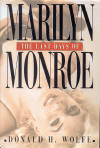 |
Wolfe Donald H.
1998 |
Donald H.Wolfe has written a
startling portrait of the twentieth century's greatest film star that not
only redefines her place in entertainment history but also reveals what
the author thinks have been the secret conspiracy that surrounded her
during her last days. |
|
The Legacy |
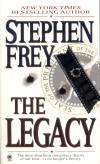 |
Frey Stephen
1999 |
Novel about JFK
Assassination.
"The most shocking conspiracy theory of our time... is no longer a
theory". |
The Lone Star
[The Life of John Connally] |
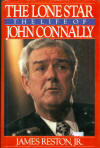 |
James Reston Jr
1989 |
This superbly readable
biography is a sweeping drama of power, money and politics on the grand
scale. It chronicles one of the great political stories of our era, the
life of a son of the Texas dust bowl who rose almost to the pinnacle of
power in America.
"Connally is an Olympian figure" says james Reston,Jr "By virtue of his
eloquence and sheer force of personality, he dominated Texas and
Washington for more than twenty years. At the center of three
presidencies, he came as close to becoming a president himself as he did
to being a lesser martyr when Kennedy was assassinated. His life has drama
of epic proportions."
John Bowden Connally, Jr. (February 27, 1917 – June 15, 1993), was
an American politician. As a Democrat he served as the 39th Governor of
Texas, as Secretary of the Navy under President John F. Kennedy, and as
Secretary of the Treasury under President Richard Nixon. As Treasury
Secretary, Connally is best remembered for removing the U.S. dollar from
the gold standard in 1971, an event known as the Nixon shock. On
November 22, 1963, Connally, at the time the Governor of Texas, was a
passenger in the car in which President John F. Kennedy was assassinated,
and was seriously wounded during the shooting.
In 1973 he switched parties to become a Republican, and ran unsuccessfully
for the Republican nomination for President in 1980. |
The Madman Theory
[An alternate history novel of the Cuban Missile Crisis] |
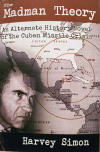 |
Harvey Simon
2012 |
This What if
John F. Kennedy had lost the 1960 election? The winner was supposed to
have been the more experienced Republican, Vice President Richard M.
Nixon. And some believe he would have been, had it not been for vote
rigging and skullduggery on Kennedy's behalf. In The Madman Theory,
49-year-old Richard Nixon does win the ‘60 election and we find out for
the first time how Nixon, rather than Kennedy, would have handled the 1962
Cuban Missile Crisis, when the world stood at the brink of nuclear
Armageddon. Would Nixon have pushed us over the edge? Could his wife, Pat,
struggling to reconcile her proper role as a wife with her estrangement
from the man who thrust her into a public life she despises, pull her
husband back from the precipice? |
|
The Martin Luther
King Assassination |
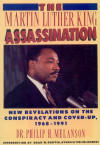 |
Melanson Philip H.
1989 |
Philip
H.Melanson, Ph.D., is one of the U.S. leading experts on the history of
American political violence. He found much lacking in the "official"
explanation of the King assassination, so he conducted an independent
investigations into the murder of King and discovered astonishingly flaws
in the government's conclusions.
Questioning the "official" findings, he went on to uncover vast amount of
new data that has never been considered in the case and that leads to
unavoidable re-evaluations. |
|
The Memoirs of
Chief Justice Earl Warren |
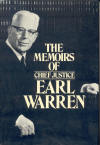 |
Earl Warren
1977 |
This is
Earl Warren's story, told in his own words - the personal narrative of an
extraordinary life...
Warren was appointed by President Eisenhower to the U.S. Supreme Court,
where he served as Chief Justice for sixteen years through some of the
bitterest judicial controversies of 60s in US.
In this book Warren describes also his involvement in what came to be
known as the "Warren Commission" investigating the assassination of John
F.Kennedy. He ends with a strong defence of the Commission's conduct and
findings. |
|
The Memoirs of
JFK: if Kennedy had survived |
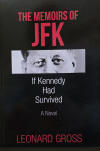 |
Leonardo Gross
2013 |
A novel.
THE MEMOIRS OF JFK imagines that John F. Kennedy survived Dallas, that he
served two terms and then wrote a flawed memoir in which he fails to
confront many of the questions that had arisen in the aftermath of the
assassination attempt. A worried publisher sends a seasoned ghostwriter to
try to persuade Kennedy to deal with these omissions. Their combat is the
engine of this novel. Although THE MEMOIRS OF JFK is an invention, both
its factual aspects and post-assassination conjectures are informed by the
author's interviews with some 50 sources-many of them members of Kennedy's
administration, some of them journalists he favored, a few of them close
friends. No one, of course, can know for certain what decisions Kennedy
would have taken, but given the nature of the man and his expressed
intent, the world described in the novel is one we might well have lived
in had he survived Dallas. |
|
The Murder of JFK
and Mary Kelly |
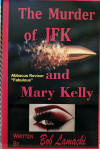 |
Bob Lamacki
2015 |
A novel.
Ted Gault does the unthinkable: he brutally murders his great love, Mary
Kelly. He cannot comprehend his own reprehensible actions. His action
takes away his soul, and must find redemption, though it is impossible.
Yet, he finds a way to become the protectorate of the community. The Black
Arrow Man shows no mercy—he becomes the arbiter of justice. final.
Max Sarb, the police chief in Stone Eagle, Wisconsin, find's Mary's
killer, but it costs him his life. Marc Sarb succeeds him as Chief of
Police, but twenty years later still has doubts about Mary Kelly's killer.
His twin sons are hard at work unraveling an even bigger mystery. The boys
are determined to uncover the truth about the murder of President John F.
Kennedy. There is no fiction here. Bob Lamacki proves we have been lied
to.
Marc would never suspect his friend Ted Gault, a pillar of Stone Eagle’s
tightly knit community, could be behind Mary Kelly’s murder. Then again,
no one would believe the shocking historical revelations his boys dig up
about Kennedy’s death. As Ted struggled to find a way to finally dam his
river of guilt, Max’s dogged pursuit of justice closes in on him. In the
meantime, the twins’ obsession with JFK’s death exposes the true nature of
evil, past and future. The JFK murder report contained in the book,
represents 40 plus years of study. There are no theories, but facts that
prove Oswald innocent. He was a patsy. |
|
The Peace Corps:
The Early Years |
 |
Charles Clyde Jones, Ph.D.
2015 |
Historical analysis of
development of a new Government agency organization and management of
policy for Public Administration.
Early Peace Corps history has many lessons to teach
about politics of public administration policy. Executive Actions to
create U.S. Peace Corps and NASA were very different than the Executive
Actions today and increasingly of interest to many college courses today.
This past history of recent Executive Actions are problematic as the are
fully progressed from an idea to reality. Yet, the idea was not so novel
when seen from developmental and historical perspectives. In many ways, it
represented secularization of many deeply-rooted humanitarian non-secular
missionary volunteer traditions of American views, beliefs, and sincere
desires to share freedom and prosperity to all. The first Peace Corps
volunteers of the Sixties were doing, without religious connotation, what
Christian missionaries had done for many decades. This book provides
detailed documentation of the many people involved in creation of the U.S.
Peace Corps by Presidents Kennedy and Johnson, in the years of the
"American Camelot", and for the first 25 years of the Peace Corps -- with
insights for the future of such humanitarian movements to the present day
and beyond. Special emphasis is given to previously unpublished insights
into early influence and interests of the first Director of U.S. Peace
Corps, Sargent Shriver. This book can be very useful as additional
readings for courses and seminars as well as independent study for
Political Science and History of government agency and for understanding
of effective roles between Congress and executive government agency
management. This book provides historical insights into early use of
Presidential Executive Orders for fast action while working with Congress
to permanently fund and organize new agencies to address critical national
needs, as pioneered by Presidents Kennedy and Johnson for Peace Corps and
NASA. |
The Presidents
[Visual Encyclopedia] |
 |
Smithsonian
2017 |
Explore
the lives of America's 45 presidents, as well as notable first ladies,
famous speeches, and major constitutional events, with this visual
reference guide to the leaders of the United States.
From George Washington to Donald Trump, The Presidents Visual Encyclopedia
presents a unique insight into life in the White House. More than 150
easy-to-read entries cover the presidents, first ladies, the Louisiana
Purchase, the Gettysburg Address, and more, and over 200 fascinating
photographs add to kids' knowledge of these leaders and the key moments
that defined their time in office.
Created in association with the Smithsonian Institution, The Presidents
Visual Encyclopedia is the perfect one-stop reference guide, teaching kids
all they need to know about the history of the United States and the
remarkable impact our country has had on the rest of the world. |
The Presidents Club
[Inside the World's Most Exclusive Club] |
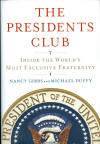 |
Gibbs Nancy &
Duffy Michael
2012 |
The
first history of the private relationships among modern American
presidents - their backroom deals, rescue missions, secret alliances and
enduring rivalries.
The President Club, established at Dwight Eisenhower's inauguration by
Harry Truman and Herbert Hoover, is a complicated place : its members are
bound forever by the experience at the Oval Office and yet are eternal
rivals for history's favor. Among their secrets : Ho Jack Kennedy tried to
blame Ike for the Bay of Pigs. How Ike quietly helped Reagan win his first
race in 1966. Ho Richard Nixon conspired with Lyndon Johnson to get
elected and then betrayed him. How Jerry Ford and Jimmy Carter turned a
deep enmity into an alliance. The letter from Nixon that Bill Clinton
rereads every year. The unspoken pact between a father and a son named
Bush. And the roots of the rivalry between Clinton and Barack Obama.
Journalists and presidential historians Nancy Gibbs and Michael Duffy
offer a new tool to understand the presidency by exploring the club as a
hidden instrument of power that has changed the course of history. |
The Presidents vs the Press
[The endless battle between the White House and the Media from the
Founding Fathers to Fake News] |
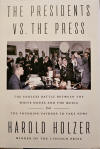 |
Harold Holzer
2020 |
An
award-winning presidential historian offers an authoritative account of
American presidents' attacks on our freedom of the press.
Every president has been convinced of his own honesty and transparency;
every reporter who has covered the White House beat has believed with
equal fervency that his or her journalistic rigor protects the country
from danger. Our first president, George Washington, was also the first to
grouse about his treatment in the newspapers, although he kept his
complaints private. Subsequent chiefs like John Adams, Abraham Lincoln,
Woodrow Wilson, and Barack Obama were not so reticent, going so far as to
wield executive power to overturn press freedoms, and even to prosecute
journalists.
Theodore Roosevelt was the first president to actively manage the stable
of reporters who followed him, doling out information, steering coverage,
and squashing stories that interfered with his agenda. It was a strategy
that galvanized TR’s public support, but the lesson was lost on Woodrow
Wilson, who never accepted reporters into his inner circle. Franklin
Roosevelt transformed media relations forever, holding more than a
thousand presidential press conferences and harnessing the new power of
radio, at times bypassing the press altogether. John F. Kennedy excelled
on television and charmed reporters to hide his personal life, while
Richard Nixon was the first to cast the press as a public enemy. From the
days of newsprint and pamphlets to the rise of Facebook and Twitter, each
president has harnessed the media, whether intentional or not, to imprint
his own character on the office.
In this remarkable new history, acclaimed scholar Harold Holzer examines
the dual rise of the American presidency and the media that shaped it.
From Washington to Trump, he chronicles the disputes and distrust between
these core institutions that define the United States of America,
revealing that the essence of their confrontation is built into the fabric
of the nation. |
The Price of Defiance
[James Meredith and the Integration of Ole Miss] |
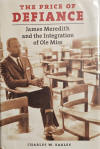 |
Charles W.
Eagles
2009 |
When James Meredith enrolled as the first African American student at the
University of Mississippi in 1962, the resulting riots produced more
casualties than any other clash of the civil rights era. Eagles shows that
the violence resulted from the university's and the state's long defiance
of the civil rights movement and federal law. Ultimately, the price of
such behavior--the price of defiance--was not only the murderous riot that
rocked the nation and almost closed the university but also the nation's
enduring scorn for Ole Miss and Mississippi. Eagles paints a remarkable
portrait of Meredith himself by describing his unusual family background,
his personal values, and his service in the U.S. Air Force, all of which
prepared him for his experience at Ole Miss. |
The Quiet Companion
[Malice in the Shadow of JFK] |
 |
Peter
Chatelain
2009 |
A novel.
President-elect Kennedy spends November 18, 1960, alone at his parents'
home on Palm Beach. He meets Enid, an attractive painter, by the water.
The chance encounter triggers his puzzling decision to return to Florida
immediately after Thanksgiving, leaving his heavily pregnant wife
Jacqueline behind. Enid becomes the President's best kept secret and,
unbeknown to him, much more than that. This presidency is strewn with dark
mysteries from the demise of Marilyn Monroe to that of JFK himself;
passing by the sidelining of lover Judith Exner, the forced repatriation
of german model Ellen Rometsch, the wrath of Sinatra, the motives of Mafia
bosses Giancana and Trafficante, the ominous warning to Press Secretary
Salinger and the political survival of Edgar Hoover. Because Enid is not
whom she seems. So who is this intelligent redhead, with gazelle eyes, who
loves and dreams in the shadow of a president? Is she acting for others?
If she is genuinely enamoured with JFK, she doesn't save him from the gun.
And why does Mary Meyer, JFK's lifelong friend, meet the same fate
thereafter? Masterly crafted around historical accounts, The Quiet
Companion captures the reader in a fascinating web of intrigue until the
last breathtaking page. |
|
The Red Diaries |

 
 |
Gary Reed
Caliber Comics
1997 |
The Red Diaries was
released as a four-issue series with each issue running 48 pages, about
the Kennedy / Mob / CIA and other connections with Marilyn.
Written by Gary Reed, it featured artwork from Chris Jones, Laurence
Campbell, Larry Shuput, and Ken Meyer, Jr. In addition to the story line,
there is background information that will provide a wider view on the
story line. These short segments include a history of the CIA, the Kennedy
family, the formal reports on the Kennedy Assassination, Monroe's death,
and more. |
|
The Speeches
collection - Vol.1 |
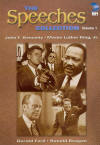 |
AA:VV.
DVD |
A
two-disc set containing the important and famous speeches of John
F.Kennedy, Martin Luther King,Jr, Gerald Ford and Ronald Reagan.
John F.Kennedy was dynamic, poised and relaxed at all times. The program
focuses on Kennedy, the public orator and features every major address
during his three years in the White House.
Martin Luther King Jr was perhaps the most inspirational speaker of all
time. Follow his electrifying speeches from the early days as a young
pastor in Montgomery to the great march on Washington, including the final
prophetic speech in Memphis just days before his tragic assassination. |
The strange
career of the Jim Crow
[A Commemorative Edition] |
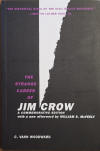 |
C.Vann
Woodward
2002 |
C.
Vann Woodward, who died in 1999 at the age of 91, was America's most
eminent Southern historian, the winner of a Pulitzer Prize for Mary
Chestnut's Civil War and a Bancroft Prize for The Origins of the New
South. Now, to honor his long and truly distinguished career, Oxford is
pleased to publish this special commemorative edition of Woodward's most
influential work, The Strange Career of Jim Crow.
The Strange Career of Jim Crow is one of the great works of Southern
history. Indeed, the book actually helped shape that history. Published in
1955, a year after the Supreme Court in Brown v. Board of Education
ordered schools desegregated, Strange Career was cited so often to counter
arguments for segregation that Martin Luther King, Jr. called it "the
historical Bible of the civil rights movement." The book offers a clear
and illuminating analysis of the history of Jim Crow laws, presenting
evidence that segregation in the South dated only to the 1890s. Woodward
convincingly shows that, even under slavery, the two races had not been
divided as they were under the Jim Crow laws of the 1890s. In fact, during
Reconstruction, there was considerable economic and political mixing of
the races. The segregating of the races was a relative newcomer to the
region.
Hailed as one of the top 100 nonfiction works of the twentieth century,
The Strange Career of Jim Crow has sold almost a million copies and
remains, in the words of David Herbert Donald, "a landmark in the history
of American race relations." |
The strange
careers of the Jim Crow North
[Segregation and struggle outside of the South] |
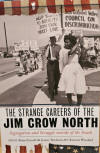 |
Brian Purnell
& Jeanne Theoharis
2019 |
Jim
Crow was not a regional sickness, it was a national cancer. Even at the
high point of twentieth century liberalism in the North, Jim Crow racism
hid in plain sight. Perpetuated by colorblind arguments about “cultures of
poverty,” policies focused more on black criminality than black equality.
Procedures that diverted resources in education, housing, and jobs away
from poor black people turned ghettos and prisons into social pandemics.
Americans in the North made this history. They tried to unmake it, too.
Liberalism, rather than lighting the way to vanquish the darkness of the
Jim Crow North gave racism new and complex places to hide. The twelve
original essays in this anthology unveil Jim Crow’s many strange careers
in the North. They accomplish two goals: first, they show how the Jim Crow
North worked as a system to maintain social, economic, and political
inequality in the nation’s most liberal places; and second, they chronicle
how activists worked to undo the legal, economic, and social inequities
born of Northern Jim Crow policies, practices, and ideas.
The book ultimately dispels the myth that the South was the birthplace of
American racism, and presents a compelling argument that American racism
actually originated in the North. |
|
The Third Bullet |
 |
Hunter Stephen
2013 |
Novel.
Stephen Hunter takes on one of the most shocking crimes in American
history when his celebrated hero ex-Marine sniper Bob Lee Swagger follows
the smallest hint of a lead to its staggering conclusion...about the
fateful third bullet that ended the life of President John F.Kennedy. |
The Tunnels
[Escapes under
the Berlin Wall and the historic films the JFK White House tried to kill] |
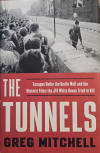 |
Greg Mitchel
2016 |
A thrilling Cold War narrative of superpower showdowns, media suppression,
and two escape tunnels beneath the Berlin Wall.
In the summer of 1962, the year after the rise of the Berlin Wall, a group
of young West Germans risked prison, Stasi torture, and even death to
liberate friends, lovers, and strangers in East Berlin by digging tunnels
under the Wall. Then two U.S. television networks heard about the secret
projects and raced to be first to document them from the inside. NBC and
CBS funded two separate tunnels in return for the right to film the
escapes, planning spectacular prime-time specials. President John F.
Kennedy, however, was wary of anything that might spark a confrontation
with the Soviets, having said, “A wall is better than a war,” and even
confessing to Secretary of State Dean Rusk, “We don’t care about East
Berlin.” JFK approved unprecedented maneuvers to quash both documentaries,
testing the limits of a free press in an era of escalating nuclear
tensions. |
|
The United States
Capitol |
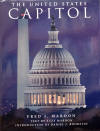 |
Fred J. Maroon
1993 |
This book is an unparalleled volume of architectural photography revealing
the majestic interiors - public and private - and breathtaking exterior of
this America landmark building.
Briefly traces the history of the Capitol building, shows its entrances,
porticoes, corridors, and chambers, and describes the work of the Congress |
1
2
3 4
5
Back to Top Back to Biagio's
J.F.Kennedy Home Page


Biagio Privitera's
Home Page. You can contact me at
biagio@biagioprivitera.it
|
![]()